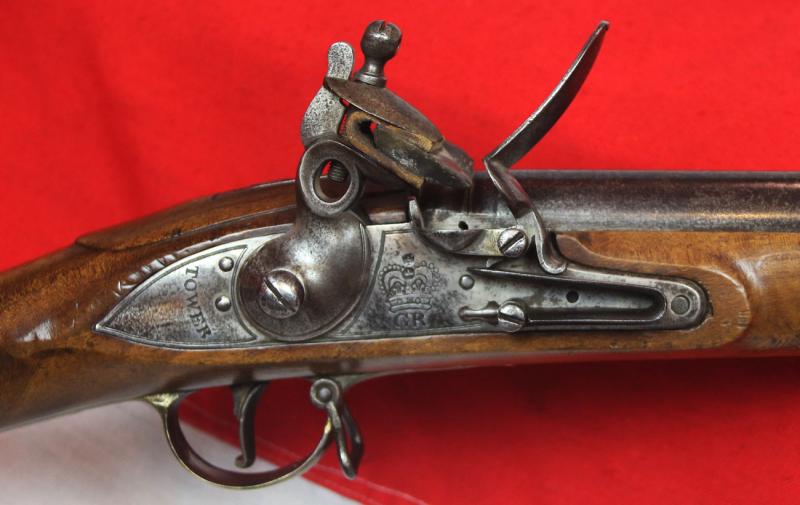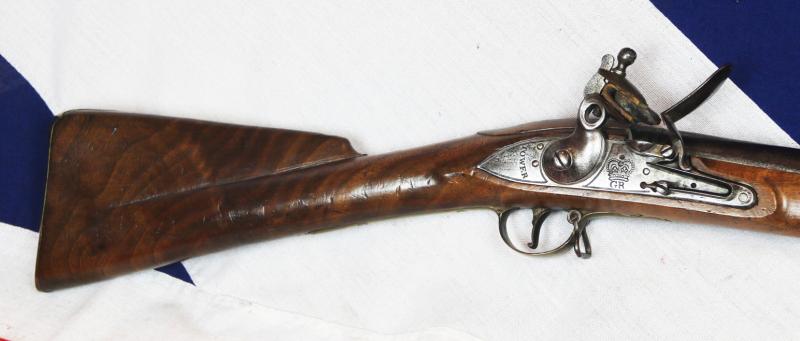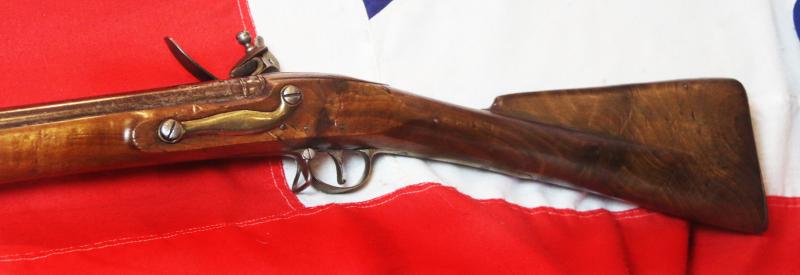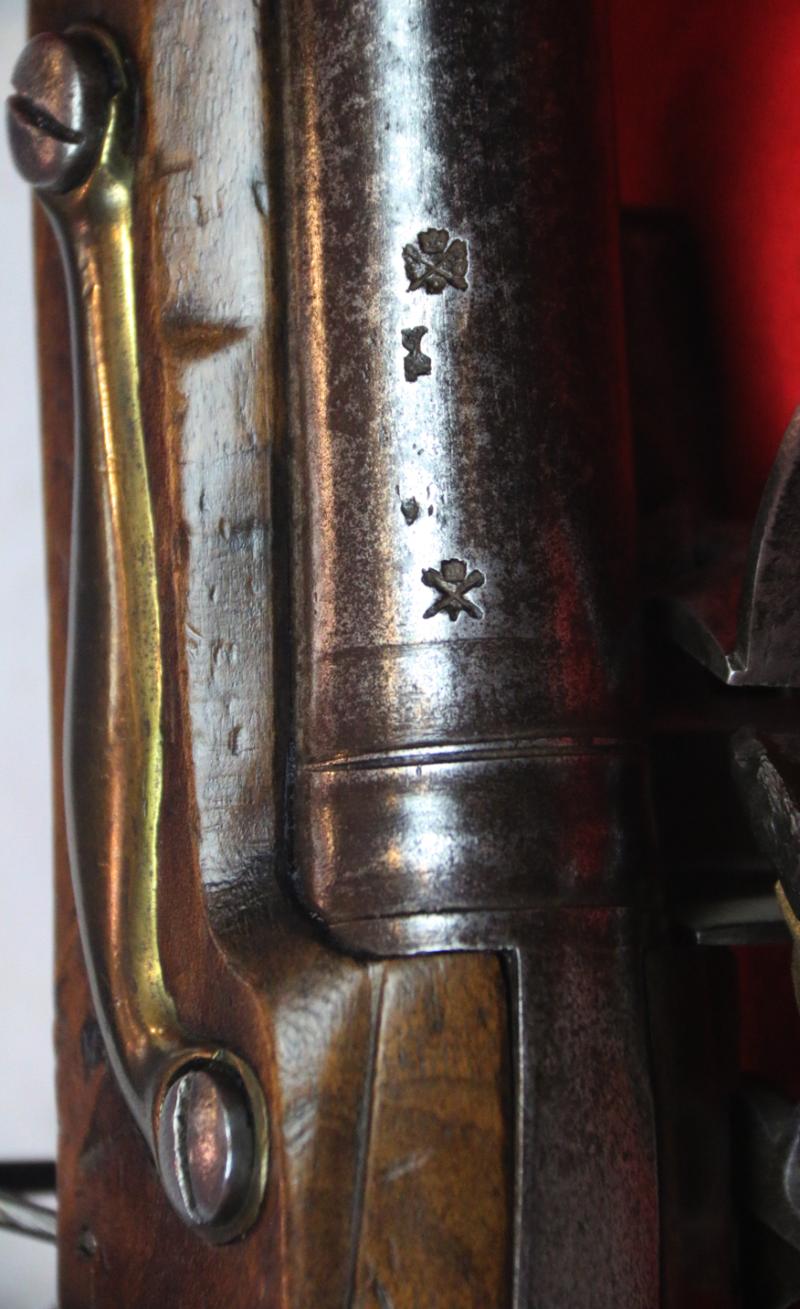An Exceptional Third Pattern Napoleonic Wars Brown Bess, FrontlIne Issue Made At The Tower of London with Bayonet Circa 1808. The British ‘Brown Bess’ Was The Most Famed Musket In The World. No Army In The World Failed To Respect Them
Probably the most famous military flintlock musket in the world today, and certainly one of the most historically important and desirable long guns of its type from the Napoleonic wars.
A typical regulation example but in exceptional and excellent condition, with a stunning colour and patina. A British Napoleonic Wars regulation, regiment of the line issue musket, Crown GR and Tower, ring neck cock lock with government GR Crown stamp, regulation brass mounts, iron ramrod, sling swivels and triangular socket bayonet. Walnut stock with signs of combat use but still exceptionally fine. A musket that it would be highly unlikely ever to improve upon to find a better example.
The Brown Bess musket began its life almost 300 years ago, and it helped in creating one of the greatest trading empires the world has ever seen and, among other achievements, made the 'British Square' the almost undefeated form of infantry defence throughout the world. Made in four distinct patterns it originally started life as a 46 inch barrel musket called the Long Land or Ist pattern Brown Bess. Then in around 1768 the gun evolved and the barrel was shortened to 42 inches as 46 was deemed unwieldy and renamed the Short Land or 2nd pattern. Although the Long Land was made continually for another 20 years. With the onset of the Napoleonic Wars in the 1790s, the British Board of Ordnance found itself woefully short of the 250,000 muskets it would need to equip its forces. It managed to produce around 20,000 short land pattern muskets but this was simply not sufficient. At that time the British East India Company maintained it own troops and had contracted with makers to produce a simplified version of the Brown Bess musket with a 39-inch barrel and less ornate furniture and stock work. It was generally felt that the standard of these "India pattern" muskets was not up to the standard of the earlier Besses, but necessity required action so the authorities convinced Company officials to turn over their stores to the Crown. By 1797 the urgencies of war ultimately created the demise of the Short Pattern, and all manufacture was turned to building the more simple 'India' pattern. For the most part, the gun underwent few changes from its introduction until Waterloo, with the exception of the cock, which was altered from the traditional swan-neck style to a sturdier, reinforced ringed version in around 1808. Barrel 39inch overall 54.75 inches long.
Action has a very good and strong mainspring. As with all our antique guns no license is required as they are all unrestricted antique collectables
Code: 25271









